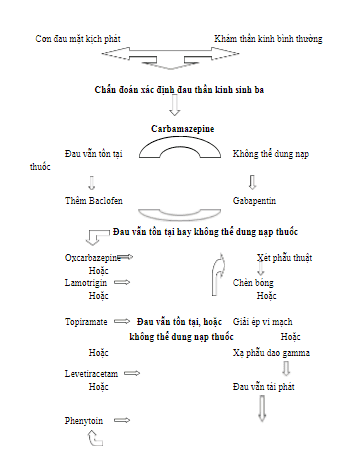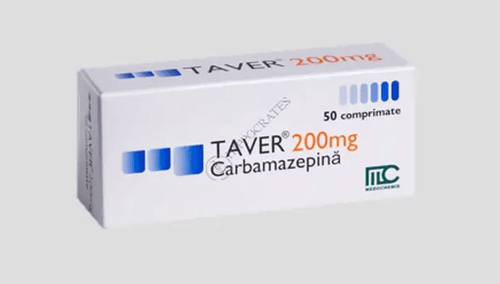This is an automatically translated article.
The article is written by MSc, Doctor Nguyen Van Thai, Department of Examination & Internal Medicine - Vinmec Central Park International General Hospital
Trigeminal neuralgia, also known as trigeminal neuralgia, causes paroxysmal pain on one side of the face. Frequency can range from a few times to hundreds of times per day and is often accompanied by facial spasms. Pain may be spontaneous without arousal, or be related to triggers when stimulating the face or mouth (trigger zones).
1. Outline
General The annual incidence rate is about 4.3/100,000 population, female predominance over male. The typical age of the disease is 60-70 years old, rarely before 40 years of age. Most cases were reported sporadically, although some were familial. Some regress spontaneously, but most conditions persist. Classification includes: Classical trigeminal neuralgia (also called idiopathic trigeminal neuralgia) accounts for over 85% of cases. Trigeminal neuralgia: low incidence (with the presence of underlying lesions, causes not due to neuro-vascular conflict).
2. Cause - pathogenesis
Pathogenesis is not clearly defined. However, in idiopathic trigeminal neuralgia, demyelination secondary to neurovascular conflict, vascular compression of the trigeminal nerve at the cerebellar pontine angle, or in cases of unknown etiology is noted. . Ectopic impulses are transmitted from painless fibers to painful fibers. In addition, in patients with trigeminal neuralgia, the pontine-trigeminal angle was also noted to be sharper than normal and subsequent nerve atrophy.
Different from classic trigeminal neuralgia, in trigeminal neuralgia, possible abnormalities are noted such as damage to the cerebellar pontine angle, tumor at the nerve root site, dynamic and static malformations vessels, bone compression, small cerebral infarction in the pons and medulla oblongata.

3. Clinical symptoms
Characterized by paroxysmal pain on one side of the face, severe throbbing pain lasting from 1 second to 2 minutes related to the distribution of V cord sensation. Frequency can range from few to hundreds of times/day and is usually accompanied by facial constriction. Pain may be spontaneous without arousal, or be related to triggers when stimulating the face or mouth (trigger zones). Typical triggers include talking, laughing, chewing, brushing teeth, shaving, exposure to wind, makeup. The right half of the face is usually more noticeable than the left side (ratio 1.5:1). The most common branch is the maxillary branch, the eye branch is the least common.
4. Treatment protocol
4.1 Treatment goals and principles Objectives:Control pain and achieve complete pain remission Balance disease control-drug side effects Principles:
Medical treatment: all newly diagnosed cases classic trigeminal neuralgia, limited response to symptomatic trigeminal neuralgia. Surgery: + Consider when not responding to medical treatment, or cannot tolerate
medication due to severe side effects for idiopathic trigeminal neuralgia
+ Surgical treatment of the cause for neuropathic pain three symptoms.

Carbamazepine: First-line treatment in classic trigeminal neuralgia. Dose 100-2400 mg/day Oxcarbazepine: Dose 600-1800mg/day Baclofen: Dose 10-80 mg/day Phenytoin: Dose 300mg/day Gabapentin: Dose up to 2700mg/day Lamotrigine: Usual dose 100-400mg Levetiracetam : Initial dose 500mg × 2 times/day, double dose after 2 weeks Topiramax: Usual dose 100-400mg divided 2 times/day 4.3 Surgical treatment Indication: in refractory patients with adequate trial of at least at least 3 drugs which must include carbamazepine open surgery, percutaneous surgery
4.4 Follow-up Ideally should be re-evaluated every week, then the reevaluation interval should be longer
if pain is controlled control.
Discontinuation test: should be performed after achieving pain-free
4-6 months

When there are early symptoms of the disease, you should go to a reputable medical facility for early examination and treatment advice from specialist doctors. Vinmec International General Hospital is a high-quality medical facility in Vietnam with a team of highly qualified medical professionals, well-trained, domestic and foreign, and experienced.
A system of modern and advanced medical equipment, possessing many of the best machines in the world, helping to detect many difficult and dangerous diseases in a short time, supporting the diagnosis and treatment of doctors the most effective. The hospital space is designed according to 5-star hotel standards, giving patients comfort, friendliness and peace of mind.
Please dial HOTLINE for more information or register for an appointment HERE. Download MyVinmec app to make appointments faster and to manage your bookings easily.














